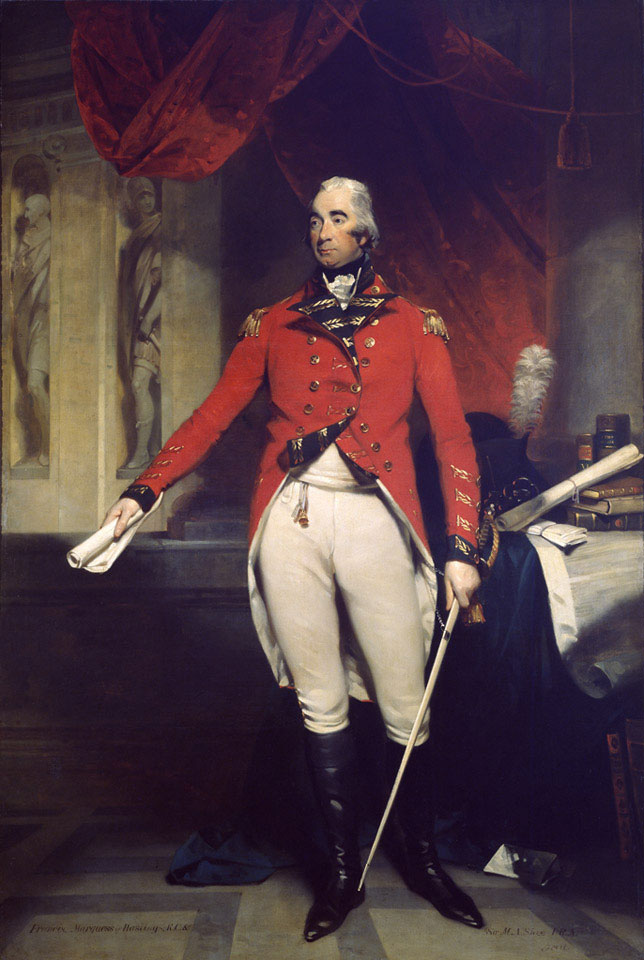
Online Collection
« Prev - 1 of 1 results - Next »
Francis Rawdon Hastings, Earl of Moira (later Marquess of Hastings), 1804 (c)
Oil on canvas by Sir Martin Archer Shee (1769-1850), 1804 (c).
This portrait was painted before 1812 when Hastings, 2nd Earl of Moira, was appointed Governor General of Bengal and created Marquess Hastings.
Francis Rawdon (1754-1862) was commissioned into the 15th Regiment of Foot in 1771. He saw service in the American War of Independence (1775-1883), distinguishing himself by his gallantry at Bunker Hill (1775), where he received two bullets through his cap. In 1778 Rawdon was promoted Lieutenant-Colonel and was nominated Adjutant-General to the forces in America. In 1781 he attacked and defeated an American force at Hobkirk's Hill, a victory which Cornwallis described as 'by far the most splendid of this war'.
Created Baron Rawdon of Rawdon, Yorkshire, in 1783, he took the extra surname of Hastings in 1790, in pursuance of his uncle's will. In 1793 Rawdon-Hastings succeeded his father as the second Earl of Moira. After further service during the French Revolutionary Wars, in 1812 he was appointed Governor General of Bengal and Commander-in-Chief of the forces in India. In recognition of his conduct of the Gurkha War (1814-1816), he was created Marquess Hastings in 1815. This success, and his victories over the Pindaris and Marathas (1817-1818) led to him being hailed as the man who completed Richard, Marquess of Wellesley's work of conquest in India.
From 1824 until his death in 1826, Hastings served as Governor and Commander-in-Chief of Malta. Tall and imposing as this portrait shows, Hastings was an able administrator who lived grandly. He also left the strange instruction that his right hand should be cut off after death and preserved until the death of his wife, Flora, when it was to be placed in her coffin.
NAM Accession Number
NAM. 1956-02-598-1
Copyright/Ownership
National Army Museum, Out of Copyright
Location
National Army Museum, Study Collection
Object URL
https://collection.nam.ac.uk/detail.php?acc=1956-02-598-1

